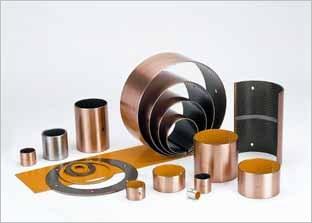1 Special production process
Due to the special requirements of the production process, some key industrial and mining equipment in extremely harsh conditions to run. Due to heavy equipment, high ambient temperatures, dusty air with acidic or corrosive gases CO, SO2, etc., lubrication equipment has brought a lot of problems, severe friction and wear, as of now, most domestic companies still follow the traditional above-mentioned oil, greased, mining conditions which in fact are beyond the scope of oil, grease lubrication, prone to bearings and other friction bite or killed, causing severe wear and damage of parts, regularly result in equipment downtime. In order to produce continuous operation, in addition to the original design requires the installation of more than one equipment rotation, but also put a lot of maintenance personnel. This has seriously hampered the improvement of productivity and the enormous spare parts and energy consumption that have become an important obstacle to the development of production. Automobile manufacturing, cement production, petrochemical and other companies have proposed to provide complex conditions under the conditions of special lubricants requirements. To this end, the study of mosaic self-lubricating composite material, highlighted on the material formulation and preparation of its own characteristics, material properties has reached the international advanced level, for enterprises to solve the problem of special conditions of lubrication, and has brought significant Economic and social benefits. However, due to a variety of reasons more domestic enterprises have not yet adopted, the above situation still exists.

2 key technical principles
Inlaid self-lubricating bearings with a composite material is a new type of anti-extreme pressure solid lubricating material, the metal substrate and embedded in the hole or groove of the solid lubricant paste composition. In the friction process, the metal substrate bear most of the load. The friction, hole or groove of the solid lubricant to the friction surface transfer or reverse transfer, the friction surface to form a well-lubricated, solid adhesion and uniform coverage of the solid transfer film, greatly reducing the friction and wear. As friction progresses, the embedded solid lubricant is continuously supplied to the friction surface to ensure good lubrication of the friction pair during long-term operation.
3. Water lubricated bearings detailed parameters
First, P117 series of thrust bearing low cost, strength, wear resistance in general, suitable for all kinds of submersible thrust pump thrust bearing. Second, the COP series thrust shaft low cost, suitable for low-power low-lift submersible pump under the thrust bearing (thrust bearing outer diameter of 85mm or more, power 11km lift 65m below) Third, the series of PTFE thrust Bearing affordable, is the mainstream products used in submersible pumps, suitable for high-lift submersible thrust pump under the thrust bearing. Fourth, S299 high-strength thrust bearing high cost, suitable for high-power high-lift submersible thrust pump thrust bearing. Five, S299B high-strength thrust bearing six, S299G high wear-resistant high-voltage current seven high-tech products, M120H series sintered graphite bearing (sintered graphite impregnated with epoxy resin) lower cost, suitable for all kinds of submersible pumps of the following 18.5KW Guide bearing. Eight, M120B series sintered bearing graphite (graphite impregnated sintered babbitt) high cost, the above various 18.5KW guide submersible pump bearings and various high-power, high lift submersible pump thrust bearing. Nine, M102B (asbestos) higher cost, suitable for more than 18.5KW submersible pump oriented bearings.
